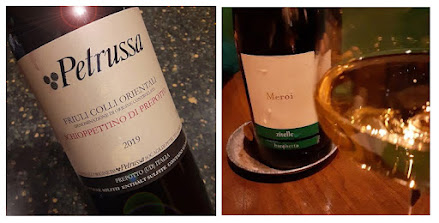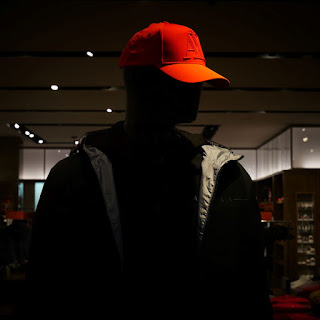Well, the default world is back upon us. Everything is opening back up. And the merrymakers are back at it. That’s right folks, we’re going back, not just in time, but in deeds.
Three years ago, we looked out over the precipice with little to go on. We were in uncharted waters. Incertitude abounded. Fear, as well. But we were moving forward, creeping slowly at that, but one foot in front of the other. Towards an indeterminate future.
We left many behind. They didn’t make it. Family. Friends. Followers. Cohorts. The world changed beyond question. Many of us questioned where we were going.
Some of us traveled to new lands. Some of us stayed put. Some of us froze. Some of us changed.
Now, three years later, what is this world? For some of us, the comfort of returning to things the way they were has been an irresistible temptation. So, here we go again. Wine dinners. Scores. Reviews. Junkets. Competitions. The inevitable master class. Back at it, again.
The problem of the last three years is that we have seen the problem is much of the world is a result of the doings of the Master Class. But some of us still cannot resist going back into the tried and true, the cliché, the way things were.
Scott Galloway sheds light on this regression. It seems many folks who have built their personal brand as influencers and experts, in search of fame and fortune, have gotten caught up in what he calls the porn cycle.
People who are famous for being famous,
who have no real authority or evident talent, except an ability to capture
attention and monetize it, a skill often rooted in shamelessness and an
insatiable need for attention that sparks their outrageous actions/statements.
Social media’s algorithms elevate the theatrics, bringing more attention to
monetize, incentivizing increasingly outrageous behavior, and the wheel spins.
There’s a word for this.
While this might seem an extreme example of what is happening in the virtual world, in the world of the living what I am witnessing is a ramping up of passions, in order to get people’s attention. Likes, follows, reposts, in ostensibly what is a desperate attempt to command the stage. Yelling instead of speaking in a normal voice. Shit-posting and using emotionally charged words to make things seem more newsworthy than they might be. We’re seeing those all over the place, and the wine world is not immune to these theatrics.
So, a Left Coast PR hack, who was invited, gratis, to a junket to Emilia-Romagna, is all of a sudden, an expert in Parmigiano, Prosciutto and Lambrusco. How many times again will we hear the story of the donkey, the straw and the Cinquecento? Ground hog day, anyone?
Lest you think I am swerving all over the road, do not doubt yourself. I am. I mean with the donkey and all that straw in the back of my Fiat 500, who wouldn’t be?
It’s harmless enough. After all, the average folk who attend a class, statistically, will not remember 90% of what they heard after ten minutes. Throw in some wine and make it five.
Italy is a great shot. Always hits the target. And usually, it’s the foot. I’ve seen it for a couple of generations now. They reach out to the world with their goods, and they end up sending some unprepared ambassadors, who tell some stories, more fables than facts, and think this is what building the “Made in Italy” brand is all about.
Meanwhile, the masterpieces are left, untouched, unnoticed.
E la nave va.
Dry (Friuli) January
I opted to go dry (but not sans alcool) in January. Coincidentally, the month turned out to be a mini-tutorial refresher course in wines of Friuli. The last time I was in Friuli was 2017, my sixth or seventh visit to the region over a period of 30 years.
Dining out this week at one of our favorite spots in Dallas, Homewood, a friend called in and ordered up a surprise bottle for our table. The young, ebullient sommelier brought us a Sauvignon Blanc, 2015 (current release, according to the winery website) from Meroi, their Zitelle vineyard and Barquetta parcel.
We ordered appropriately for the wine.
The wine appeared in flavor to be slightly oxidative. I’m not sure we got a bottle in its prime, not having any memory of this wine from the past. But being familiar with Buttrio from many visits, I was interested in spending time with this wine over the course of our meal, and getting to know a little more about the wine, the winemaker and the land from which it came.
Ultimately, though, I was left feeling something about the wine was amiss. Or maybe it was me. The wine lacked any fruit, and was sour. It went well enough with the savory foods we ordered however, so the night was not a complete loss. But upon questioning folks who know much more about this wine, methinks I might have gotten a slightly off bottle. Next time we’ll hope for a more representational example.
The next day, I met with a friend at a local BYOB, and he brought the red wine. From Petrussa, a Schioppettino di Prepotto, 2019, from Colli Orientali. Slightly east of Buttrio, Petrussa makes this red wine. We had it with what I would call an indigenous vegetarian meal, with most of the ingredients originating in the Americas. Interesting combinations of legumes, squash, grains like quinoa, tomato-based sauce and the slightly exotic addition of tofu in place of an animal protein.
The wine went very well with it. The Schioppettino was
relaxed and refreshing, not too tannic, good fruit and dry finish. I took the unfinished
bottle home and had it later in the evening with grilled meat. It went as well
with that as it did at lunch.
Friuli is a place for wines that I do not gravitate towards very often. Not for any reason, other than the wines are not that available, and there are usually other wines from other regions pulling for my attention. But as wines, they are as serious as anywhere in Italy. And these two wines, while maybe not in the mainstream that most people swim in, were, and are, worth seeking out.









No comments:
Post a Comment